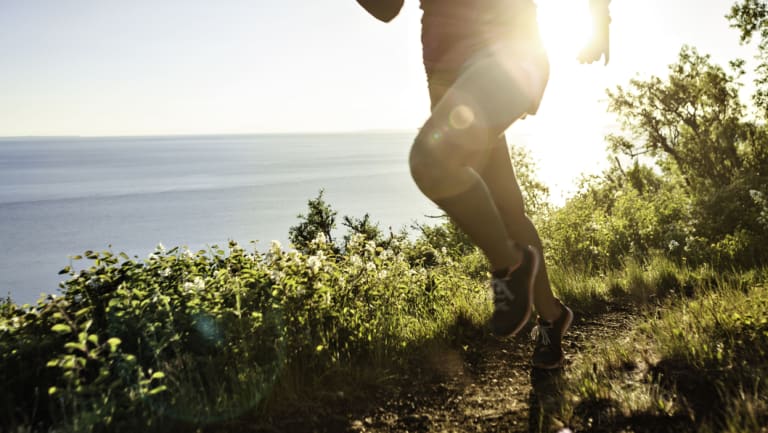This is why I started running again after a 25-year hiatus
I can't believe it's happening to me. No, it's not anything serious – like cancer or a divorce. Nonetheless, its proximity has been enough to cause attacks of anxiety and self-doubt.
I'm turning 50 this year.
If you’re sedentary or haven’t run before, start with a walking program.Credit:Stocksy
Some days my body feels like its old self, but it frequently feels like a stiffer, saggier version. As for my emotions, they're akin to a bumpy boat ride – the peaks are good, but the trough landings are heavy, and the whole thing leaves me slightly queasy.
Something that's helped me cope is an old friend – running. Returning to it after a 25-year hiatus has not just helped physically; the mental health benefits have been even more significant.
Rhythmically pounding the pavement (albeit slowly) stills my chaotic thoughts, replacing them with a sense of calm and focus.
Increasingly, evidence shows that exercise can benefit mental health, says Professor Gene Moyle, a sport and exercise psychologist at the Queensland University of Technology.
She explains that recent studies have demonstrated that fitness in middle age is an important preventive strategy against depression later in life. Exercise has been shown to be especially useful in improving mood and psychological wellbeing in menopausal women.
Any form of physical activity for at least 30 minutes each day will help. "It is about finding a form of exercise that works for the individual, both in terms of what they enjoy and how it can fit into their daily schedule," Moyle says.
She adds that the rhythmical nature of exercises like swimming and running have been linked to positive mood changes and can be of additional benefit in providing the opportunity to focus on our thoughts and reflect upon any challenges or worries we might be facing.
Physiotherapist Dr Christian Barton says people of any age should be able to run, adding that building up gradually is key to reducing risk of pain and injury. "Don't try to run further or faster than your body can cope with," he says. "Give it time to adapt."
If you're sedentary, or haven't run before, it's very sensible to start with a walking program for the first month or two, Barton says. This will help your tissues adapt to taking load. You can then progress to a walk/run program.
And while some apps may claim to get you up and running quickly, many aren't backed by science, he says.
Instead, the "age-old approach" of increasing training by 10 per cent a week is a good guide. Adding five minutes of running every couple of weeks is another reasonable approach.
If you're starting out, Barton recommends getting tips from a running coach. You should also take a day off between running sessions.
As for footwear, he suggests choosing something lightweight and comfortable, without getting too fussy. "A lot of people are very obsessed with footwear and feel like that's the reason they get injured or don't get injured," he says, "but typically it's more related to training loads."
And while runners do experience pain, the belief that it is bad for your knees is mostly myth. In fact, evidence shows that recreational runners have a lower rate of osteoarthritis then people who are sedentary, Barton says. The risk increases for competitive runners, though, so finding the "sweet spot" is important for minimising the risk of injury.
For me, starting again was tough. I could only manage about two minutes before my heaving chest and throbbing feet pulled me back to walking pace. But I gradually increased the jogging intervals, then added inclines.
I can now jog up hills that left me gasping only a few months back. Even my ski-injured knee feels better. And, best of all, the prospect of turning 50 no longer seems so daunting.
This article appears in Sunday Life magazine within the Sun-Herald and the Sunday Age on sale January 27.
Source: Read Full Article




